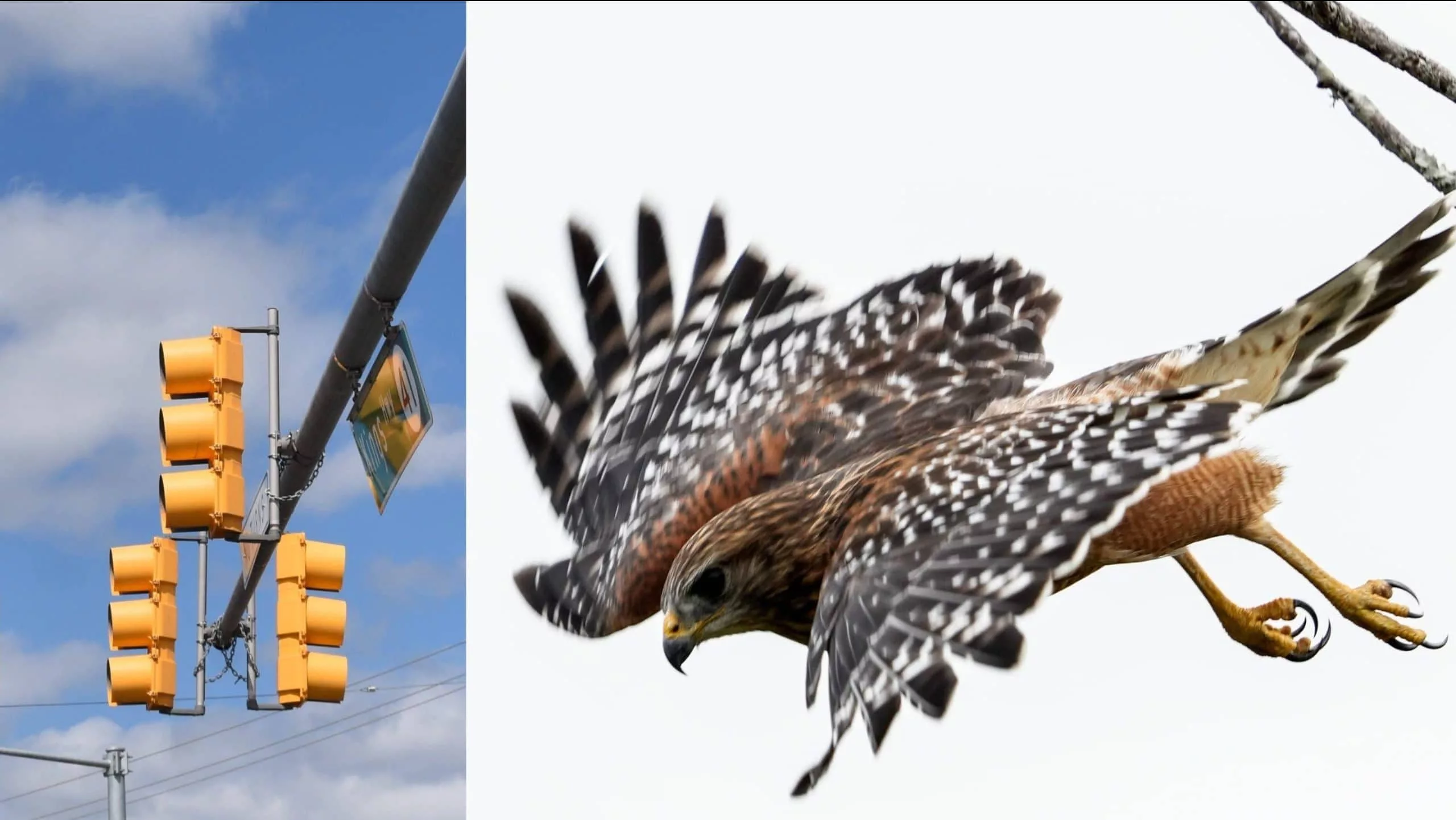
© Craig Bailey/FLORIDA TODAY via USA TODAY NETWORK / USA TODAY NETWORK via Imagn Images + © Jim Walsh/Courier-Post / USA TODAY NETWORK via Imagn Images
(West Orange, NJ) – The term bird brain is really a misnomer. Scientific research has shown how smart crows are — they even use rocks like tools in some cases. And people who keep parrots as pets know they are among our smartest feathered friends. Now, it seems a hawk in North Jersey is earning the nickname “Einstein.”
As shared in an editorial for Frontiers in Ethology, birdwatcher Bob McGuire first observed a Cooper’s hawk behaving in a fascinating way in 2020. This was in West Orange, while taking his child to school. He writes that a hawk learned to use a red light, and the ensuing stopped traffic, as a hunting tool.
McGuire says the hawk learned that the lights made a “click” as they changed colors, barely audible to anyone else, but highly apparent to the hawk’s sensitive hearing. And, as the bird learned — that meant traffic build up — and most importantly, people crossing the road. As pedestrians crossed the road, other birds such as sparrows and morning doves would scatter.
A family who live near that intersection must have been eating outdoors or tossing out little pieces of breadcrumbs, which attracted smaller birds to that property. The hawk, waiting for the light to turn red, then swooped in and caught birds as they took flight. McGuire says he was amazed to watch this level of urban adaptation from the bird, given hawks will use ridge lines and large trees for cover in the wild.
This strategic use of traffic signals highlights the hawk’s ability to integrate human infrastructure into its hunting routine. Cooper’s hawks are naturally adept at navigating complex environments, often weaving through dense forests to chase prey. In urban settings, where green spaces are limited, this hawk has turned a man-made system into a tool for survival. By timing its attacks with the traffic light cycle—red lights typically last 30 to 90 seconds—it maximizes its chances of a successful hunt while minimizing energy expenditure.
Experts like David La Puma, an ornithologist from the New Jersey Audubon’s Cape May Bird Observatory, find this behavior both fascinating and plausible. La Puma explains that Cooper’s hawks are opportunistic predators with keen observational skills.
The hawk in West Orange likely learned through trial and error that red lights create a predictable pattern of prey movement. This adaptation mirrors other urban wildlife behaviors, such as coyotes crossing roads at night or peregrine falcons nesting on skyscrapers.
McGuire’s observations, shared on social media and with local birding communities, have sparked interest in studying how urban environments shape animal behavior. As cities continue to expand, stories like this highlight the complex interplay between human infrastructure and wildlife — showing even a traffic light can become a tool for survival in the urban jungle.













